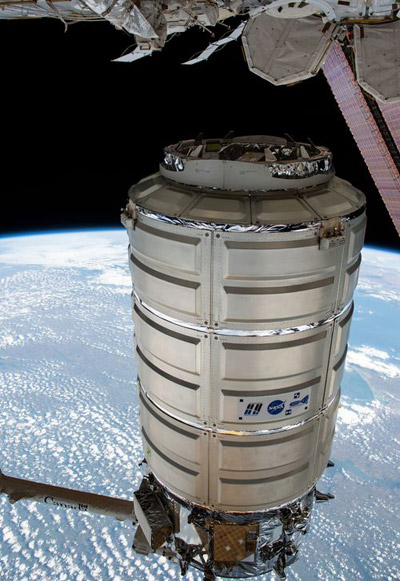- Prime Minister Narendra Modi inaugurates Aero India 2023 in Bengaluru; Releases Commemorative Stamp
- Defence Secretary meets delegations from Saudi Arabia, USA and Oman on the sidelines of Aero India 2023
- Foreign Ministers of 32 countries to attend Aero India 2023
- Embraer showcases the C-390 Millennium at Aero India 2023
Northrop Grumman's Cygnus Spacecraft Departs International Space Station, Begins Secondary Mission
S.S. Roger Chaffee set to demonstrate first extended duration flight

Northrop Grumman Corporation announced that its Cygnus™ spacecraft has successfully unberthed and departed from the International Space Station (ISS), beginning its secondary mission before it reenters Earth's atmosphere. The NG-11 Cygnus spacecraft, named in honor of Apollo 1 astronaut and space visionary Roger Chaffee, left the ISS after a 109 day stay at the station.
While docked at the orbiting laboratory, astronauts unloaded approximately 7,000 pounds of vital supplies and scientific equipment. They then loaded approximately 5,300 pounds of disposable cargo on to Cygnus for removal from the station.
The next phase of the mission will demonstrate enhanced capabilities Cygnus offers that go well beyond cargo supply and disposal. The spacecraft will deploy multiple CubeSats via the Slingshot CubeSat Deployer System installed by NASA astronauts prior to unberthing from the ISS, and the NanoRacks external CubeSat deployer. Cygnus will then remain in orbit to coincide with a second Cygnus spacecraft scheduled for launch in October to the International Space Station -- its first extended duration flight to demonstrate its capability to fly two Cygnus vehicles simultaneously and support hosted payloads for longer periods of time. This newest innovation reinforces Cygnus' ability to serve a robust and growing commercial economy in low earth orbit.





